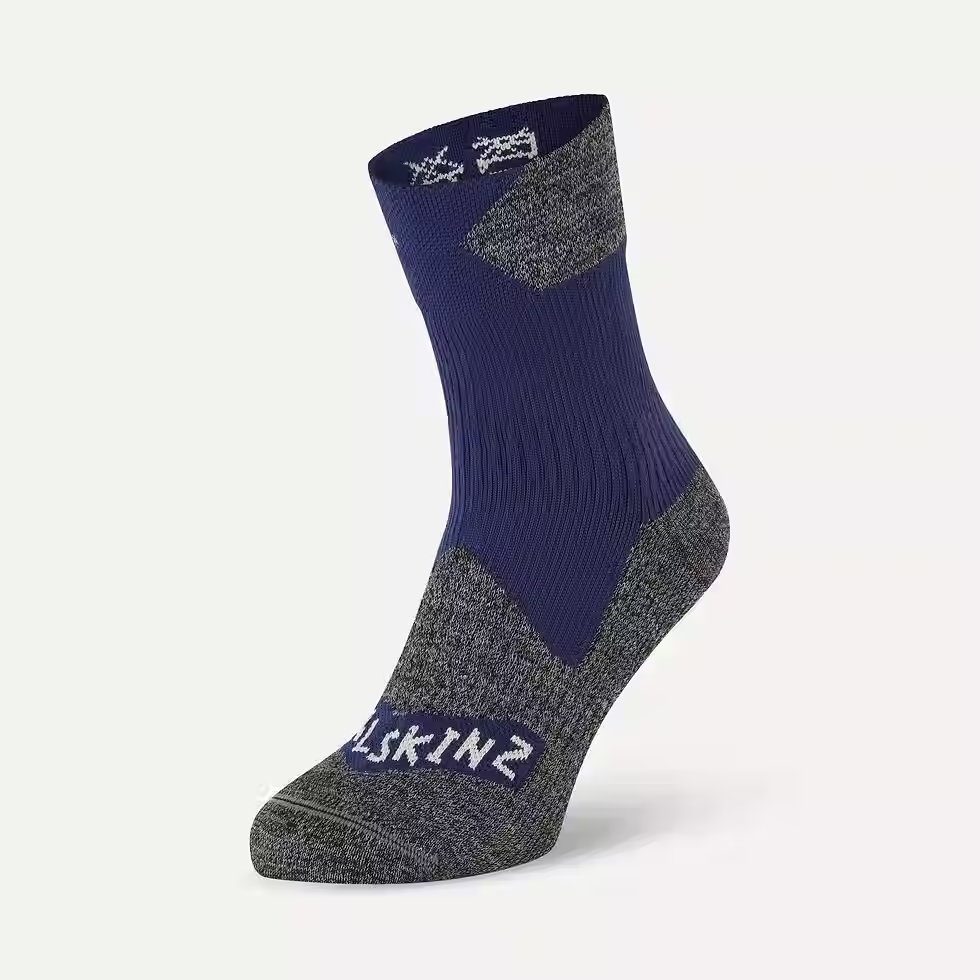As the temperature drops, our skin can react in unexpected ways.

Chilblains are more common than you think and can be a real pain in the A (although they more typically affect the extremities ;) ) over the winter months. If you’ve ever noticed itchy, uncomfortable red, blue or purple patches on your feet that flare up when it's cold, you might be all too familiar with this condition. This is your handy guide to help identify and prevent chilblains (perniosis) for GOOD!
What Are Chilblains?
Chilblains, also known as perniosis, occur when the small blood vessels in your skin swell due to cold exposure and dampness. Specifically, this is known as a 'vasospastic' condition whereby the small blood vessels in the skin do not respond effectively to rapid changes in temperature. When exposed to cold, blood vessels constrict, and when warmed up too quickly, they expand suddenly, leading to inflammation and irritation
This condition can lead to red, itchy, and swollen areas on your toes, heels, and sometimes fingertips. I see this condition regularly in clinic over the winter months. A particularly common recipe for this condition is long walks in wellies (i.e. no insulation) in cold, wet weather. Chilblains can ulcerate (break down causing skin sores) so addressing them quickly is important.
Recognizing the symptoms early can help you take the necessary steps to manage this irritating ailment.
Identifying Chilblains
Recognizing chilblains is the first crucial step in managing this condition. Look for these key symptoms:
Red or Purple Patches: Chilblains often present as noticeable red or purple patches on the feet, predominantly impacting the toes or heels.
Itching and Burning Sensation: An intense itch or a burning feeling may arise in the affected areas, especially when they start to warm up. Although, they can be painless.
Swelling: The skin surrounding the affected areas can appear swollen and feel tender to the touch.
Blisters or Ulcers: Severe cases might lead to blistering and/or ulcer formation. If left untreated, these can develop into open sores, potentially leading to infection - and can be really painful.
If you notice any of these symptoms, seeking treatment as soon as possible is advisable to minimize potential complications.
Chilblains do not immediately indicate a problem with your general circulation. Don't panic! However, it's worth being seen by a podiatrist in order for the condition to be correctly diagnosed and any other underlying health conditions being ruled out.
Chilblains usually develop within hours of exposure to cold temperatures and can persist for several days or weeks. If you experience these symptoms regularly in cold weather, you may be prone to chilblains and should take extra precautions
Treatment Options for Chilblains
There are several effective methods to manage chilblains. Here are practical strategies you can adopt:
Warm Up Gradually: When your feet are cold, avoid exposing them to direct heat sources like radiators, or plunging them into cold water when they feel sore. Instead, wrap them in a warm towel or wear thermal socks to allow gradual warming. Don't walk on cold tiled floors barefoot.
Topical Treatments: Over-the-counter creams containing corticosteroids e.g. hydrocortisone 1% cream can effectively reduce inflammation and itching. Always follow the instructions provided by your podiatrist. Friar's Balsalm mixed with a weak iodine solution can also help intact chilblains.
Pain Relief: If you're experiencing soreness, non-steroidal anti-inflammatory drugs (NSAIDs) like ibuprofen or aspirin can help alleviate discomfort.
Avoid Tight Footwear: Ensuring your shoes fit well is key. Tight shoes can worsen symptoms and hinder circulation. Consider footwear that allows for proper blood flow.
Insulate wear two pairs of thin socks and/or pop a pair of sheepskin or plastazote insoles in your footwear.
Moisturise: Keeping your feet well-hydrated with emollient creams can prevent cracking and irritation. This helps maintain the skin barrier and reduce secondary infection risks.
Gentle massage with a moisturiser such as Akileine Winter Cream will encourage blood flow and feel soothing. (For intact non-ulcerated chilblains only).
Medication such as Nifedipine (available on prescription from your GP only) can be helpful in some cases.
While these home treatments can provide relief, it is sensible to consult a podiatrist for personalised advice, especially if your symptoms persist or worsen.
Preventing Chilblains
You can take actionable steps to prevent chilblains from returning. Consider these practical tips:
Dress Warmly: Make it a habit to wear warm socks and shoes during colder months. Opt for materials like wool, known for their exceptional insulation properties.
Avoid Sudden Temperature Changes: Transition slowly from cold to warm environments. Sudden shifts can trigger chilblains.
Improve Circulation: Engage in regular exercise to enhance blood flow. Activities like walking or jogging for 30 minutes a day can promote better circulation to your feet.
Limit Alcohol and Caffeine: Both can constrict blood vessels and elevate your risk of chilblains, particularly in freezing weather. Moderating your intake in the winter can mitigate risks.
Protect Your Feet: Apply dedicated foot creams (such as Akileine Winter Cream) in advance of cold weather to help bolster your skin's natural barrier function. Consider wearing protective footwear such as waterproof socks (see below), especially in wet and chilly conditions, to shield your feet.
Implementing these strategies can dramatically lower your chances of developing chilblains, allowing you to enjoy winter months without discomfort.
When to See a Podiatrist
Many cases of chilblains are manageable at home, but it’s crucial to consult a podiatrist if you experience:
Severe symptoms that do not improve with self-care
Signs of infection, such as increased pain, redness, or oozing
Frequent episodes of chilblains
A podiatrist will evaluate your condition thoroughly and suggest personalised treatment options based on your specific needs.




Comments